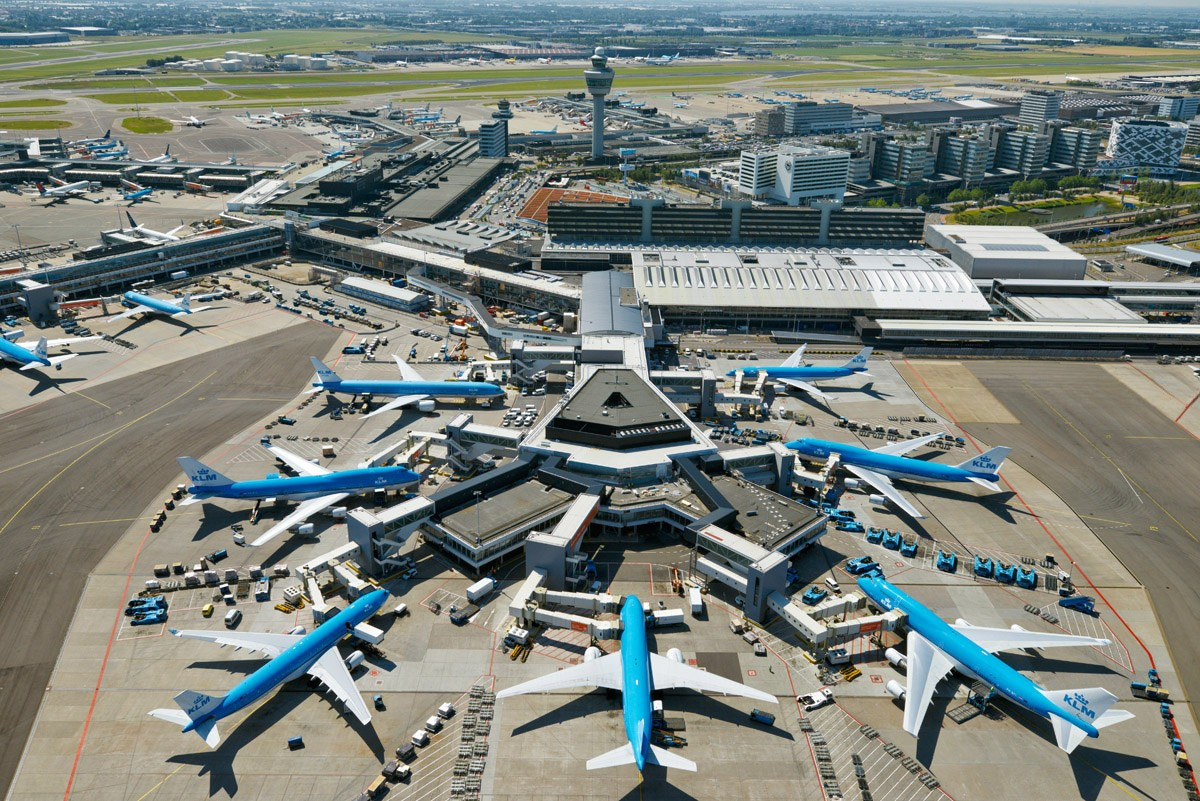Korik Alons
Co-founder
Korik Alons is an expert in strategy development and execution. He has a background in applied mathematics and business administration and serves as a partner at nlmtd. Korik has 10 to 15 years of experience as a strategist and consultant for various organizations, both nationally and internationally, with a strong track record. He is also an experienced program manager with a deep passion for sustainability and innovation.
Share this article
Amsterdam Airport Schiphol aims to become one of the most sustainable airports in the world, with a strong emphasis on the energy transition. During the Create the Future 2025 event, strategic advisor Dirk Jan Rebel shared the vision that by 2050, Schiphol intends to be energy positive.
Increasing Energy Demand as a Challenge
One of the biggest challenges is the rapidly growing demand for energy. Schiphol is making significant investments in strengthening the energy grid, while also acknowledging the need for increased flexibility, reduced energy consumption, and intelligent demand management. This necessitates the implementation of an innovative energy system.
Structured Approach
To achieve a smart energy system, Schiphol uses a structured approach that operates on three levels:
- Physical Layer
This involves adapting the infrastructure to support renewable energy generation, such as solar energy, and reinforcing the electrical grid. - Data Layer
This level focuses on real-time monitoring, data collection, and predictive analytics to improve the balance between energy supply and demand. - Operational Layer
Here, the emphasis is on the smart management of energy consumption, utilizing automation and dynamic demand response.
Through these efforts, Schiphol is transforming from a traditional energy consumer into a network of smart users, clusters, and systems, thereby enhancing efficiency and flexibility.
Schiphol has already begun

Schiphol has set ambitious goals, and these are now turning into evident progress. The airport is actively taking concrete steps to start its energy transition. What initially began as a vision on paper is now becoming a reality at various locations throughout the premises.
For instance, more ground equipment, such as baggage carts and pushback vehicles, is being replaced with electric alternatives. This shift not only reduces emissions but also contributes to a quieter and cleaner working environment on the apron.
Additionally, Schiphol is experimenting with micro smart grids, local systems that intelligently manage energy supply and demand within specific areas of the airport. These systems offer greater flexibility in energy usage, eliminating the need for central control. This approach is complemented by a large-scale solar energy initiative that increasingly utilizes roofs and grounds for renewable energy generation.
At the same time, Schiphol is making significant efforts to reinforce the electrical grid. This involves increasing the capacity of the existing grid to prepare for future energy demands.
Obstacles on the Way to a Smart Energy Hub
The journey towards an energy-positive airport presents numerous challenges. Schiphol is characterized by a complex network of stakeholders, including airlines, suppliers, the government, and grid operators.
These interdependencies make it challenging to implement changes swiftly and thoroughly. Additionally, existing laws and regulations sometimes hinder innovations, as they are not always well-suited for the rapidity and nature of the transition Schiphol is pursuing.

Finding the right balance between ambition and feasibility is an ongoing challenge. While you want to progress quickly, it’s essential to ensure safety, continuity, and operational effectiveness. However, the current approach demonstrates that, with a clear vision, a structured strategy, and effective collaboration, meaningful progress can be made even in a complex environment like Schiphol.
Collaborating on the Airport of the Future
The energy transition at Schiphol demonstrates that large-scale sustainability is achievable, even in an environment that prioritizes precision, speed, and safety. However, Schiphol cannot accomplish this alone. The airport is actively seeking to collaborate with suppliers, grid operators, technology providers, and policymakers to integrate all elements.





